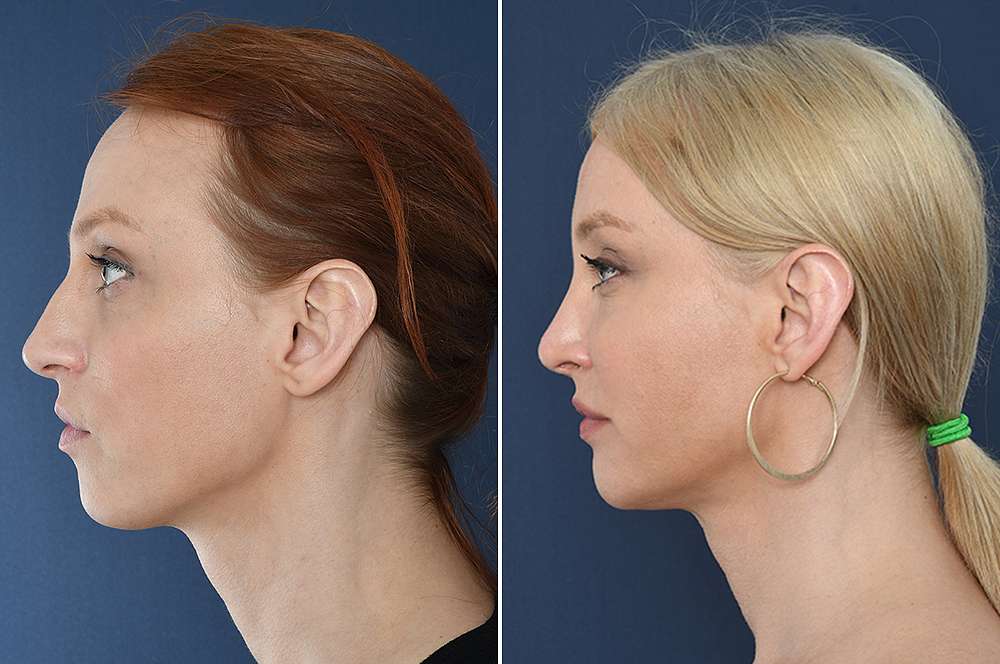Brow lift
Table of contents:
In Facial Feminization Surgery, an eyebrow lift is almost always combined with forehead recontouring and hairline lowering surgery (forehead reduction), procedures using the same incision. The arch and height of the eyebrows are related to the shape of the frontal bone that lies beneath. This is why, in forehead feminization procedures, it’s very important to correct the position and shape of the eyebrows with a brow lift after remodeling the frontal bone.




















Gender of the eyebrow

Male eyebrow
| Female eyebrow
|
Feminizing the eyebrow
A brow lift is a well-known procedure in plastic surgery. Generally, older genetic women undergo the procedure to restore a more youthful, refreshed look to the area above the eyes. A brow lift opens up your eyes making one look less stern and tired.
A brow lift is done by lifting the skin of the entire forehead, causing the eyebrows to raise.

Procedure
- For a serious brow lift with a long-lasting result, the skin of the forehead needs to be mobilized completely. This means the skin needs to be detached from the skull during surgery. There are 2 options:
- An incision deep inside the hair (bicoronal incision). The disadvantage of this incision is that the hairline will move backward as the forehead skin will be lifted. Moving the hairline backward is almost never wanted.
- Or an incision just a few millimeters inside the hair, the so-called hairline incision (see hairline lowering in one stage). This is the one that is usually opted for.
- To make sure the facial nerve isn't be damaged we choose the plane of dissection directly over the bone right under a very tight membrane that covers the outer surface of the forehead bone, called periosteum.
- To mobilize the brows, an incision of the periosteum can be made just under the brows.
- Once the brows have been brought into their desired position the access skin needs to be resected and the skin is closed.
Recovery
The recovery after a brow lift usually is uneventful. There can be some bruising which will fade away in 2-3 weeks. Swelling will be minimal.
Complications
- Undercorrection (not enough lifting);
- Overcorrection (surprised look);
- Depending on the type of incision, there can be hypertrophic scarring (hairline incision) or the hairline might be too high (bicoronal incision).
Frequently asked questions
What does this procedure cost?
You can find estimated prices here, after your consultation you will be informed of the exact prices of your operation. Prices are average and may vary depending on the exact treatment.
There are 3 options to receive a financial and operative proposal. You can either send us pictures and receive a quote and an FFS simulation, or you can book a Skype or a live consultation with Dr Bart van de Ven during which you will also receive a quote and FFS simulation. Click here if you want to get a general idea of FFS prices.
What happens if there are complications after the procedure and is this covered?
We will correct the complication if surgically possible, without charging any surgical fees. Hospital, material and traveling costs are for the expense of the patient.
Can I get this surgery if I’m a cis woman?
Yes, of course. We perform Facial Feminization Surgery on all women. Every woman is welcome at our clinic!
How long does it take for the final result to be visible and the bruises to disappear completely?
Recovery looks different for every patient, but bruising usually disappears after two to four weeks. The final result can be visible after a few months, but it may also take longer than a year. All information on recovering from FFS can be found on our recovery page.
After a hairline lowering and brow lift I now have bumps along my hairline which are irritating, do these settle down?
Those bumps are the Endotines that have been placed just inside the hair to prevent the hairline from pulling back. They will dissolve in about a year, sometimes even a bit more.
How long does it take for the endotines to disappear?
According to the manufacturer it takes about 3-6 months for the endotines to absorb. According to our experience it takes about 6-18 months before the endotines dissolve completely.
We are doing our very best to keep this information up-to-date. In case you see anything that no longer seems accurate, or in case you have a question, please fill out the form below!
